Back to the NIKA2 run 8 main page
January 25, (Wed)
Maps performed this night:
- 1 beam map at best focus
- 2 beam maps defocused (+- 0.6 wrt nominal value)
- 1 beam map with reduced power on pixels
- 2 maps with faint source (PSS2322+1944). The first with A and B boards switched, the other with boards at nominal position
- 3 dark tests with A and B boards at nominal position.
- 2 skydips
RZ: The FoV of all arrays changed considerable; especially at the right edge. The positive consequence - the crowding (almost) disappeared. The figure below shows the beam positions in the FoV, the size of the markers does not have any relation to the observed FWHM.
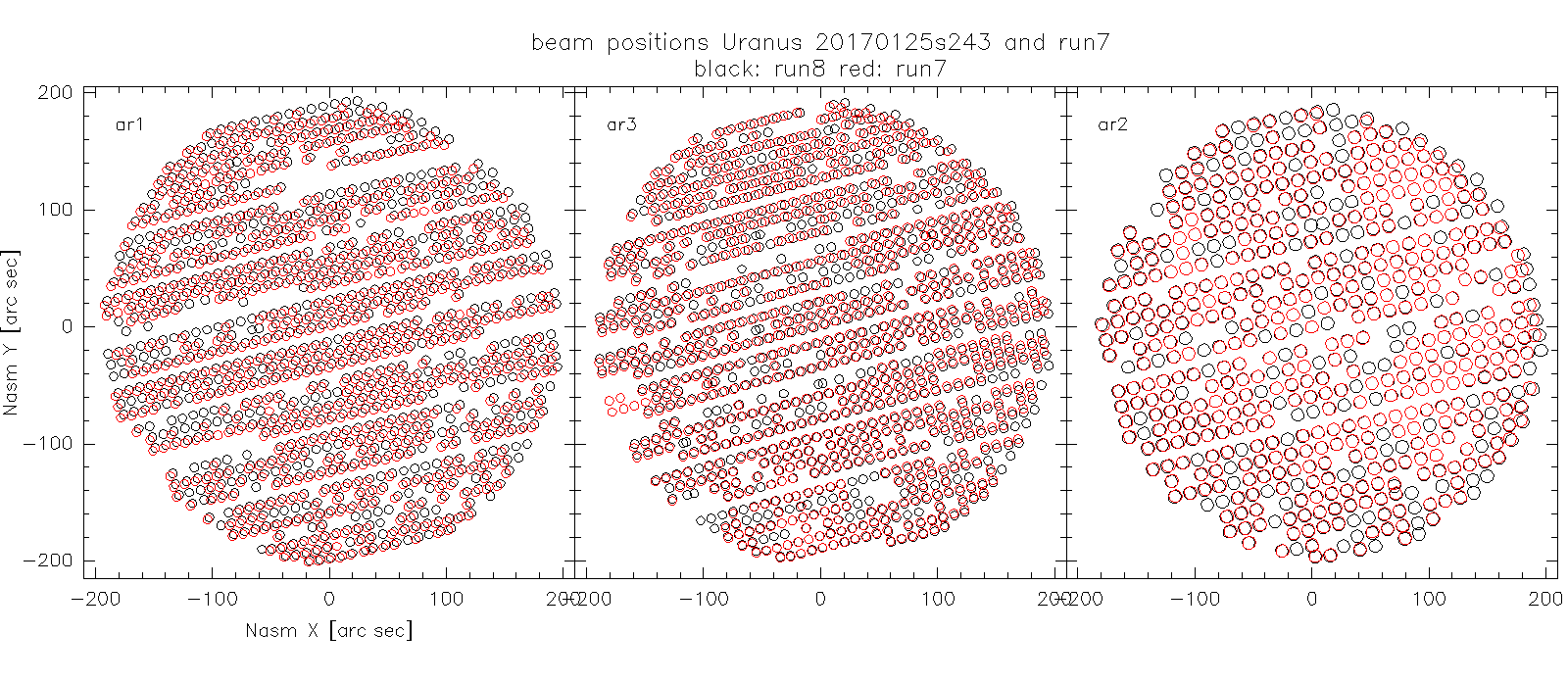
although the alignment seems to be not optimal, as demonstrate the increasing beam sizes and the ellipticity across the FoV (even at 2mm)

The beammap at optimal focus and optimal kid injection power, which scan ID is 20170125s223, was analysed and used to obtained the following flat fields (same legend as yesterday, units clarified) 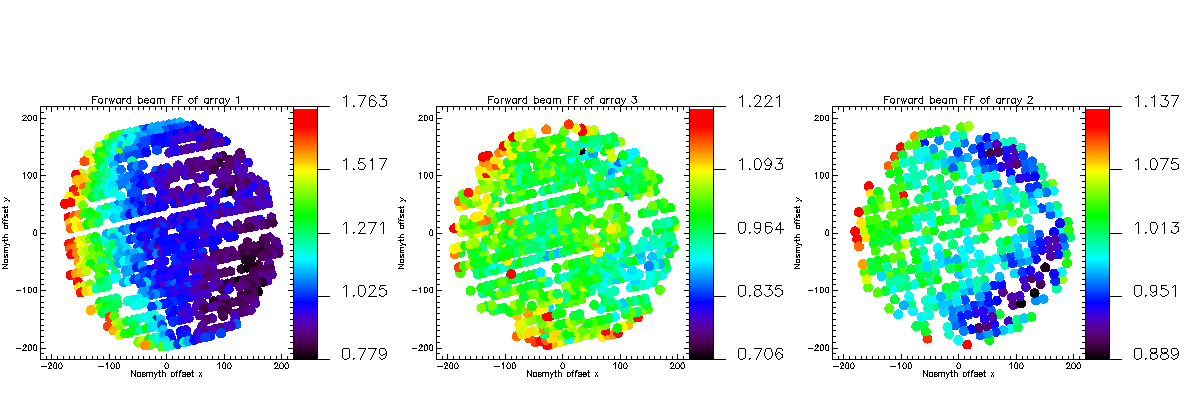
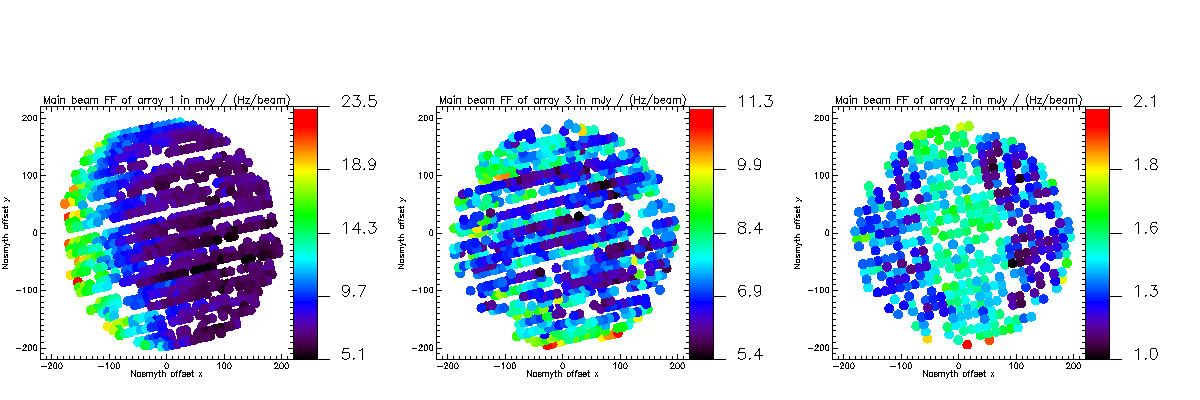
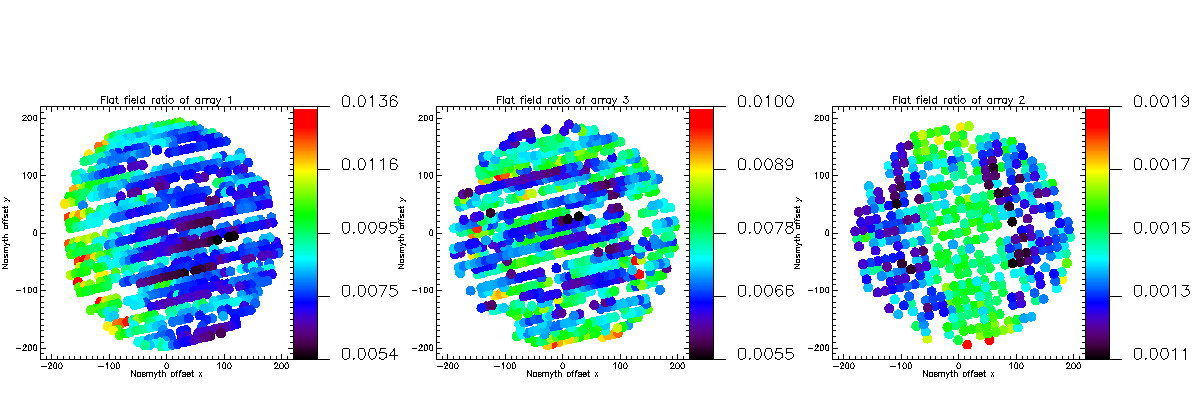
Alessandro: Thanks for the efficient work to those that are at the telescope. It seems unfortunately that NIKA2 will have to live with this gradient (that was not present in March ... this, psychologically, is the worst thing) at least in the first phases of the science exploitation. We will keep investigating but no more interventions can be planned in the short term.
Few interventions made on the instrument during the day, before starting the observations (planned at 5pm U.T.). - The leg 4 valve was replaced. It seems to work nominally now. - We inverted coax between feedline A and feedline B in order to perform a dark test cheking if the anomalous noise observed in feed line A is due to the nikel board. - We tried to reduce the level of noise due to the pulse tube moving the position of the pulse tube head. For 1mm array the noise disappeared, for the 2mm array some level of noise is still there even if reduced (see plots).
Window on the cryostat, Array2 : noise spectrum before the intervention.
Window on the cryostat, Array2 : noise spectrum after the intervention.
January 24, (Tuesday)
Laurence and Andrea arrived at the telescope.
- First, we performed the alignment of the projection of the cold pupil in the NIKA2 window by using the slab eccosorb as Alain and Samuel did during the previous campaign. We found that the cold pupil was misaligned on the window by 5 mm horizontally (in the direction of the wall) and 1.5 mm (in the direction of the roof). - Then we removed the M3 mirror using the telescope laser on the elevation axis, we tilted the M6 mirror for having the laser spot on the window in the same position of the centre of the pupil.
We see the pulse tube as usual after opening the cryostat. It does not seem to generate a noise that can bother us during the beam map so we decided to observe in this configuration. Tomorrow morning we will try to fix the problem.

Pablo, Andrea and Laurence observed right after the maintenance was finished and until 9 p.m. Around 6 p.m., whereas we finished the pointing-focus-pointing sequence almost without a glitch, the NSC system begun to crash at each temptative to launch a beammap. Eventually we were able to acquire a single beammap scan, which ID is 20170124s186. We used the short remaining amount of time to do a skydip (scan ID: 20170124s189)
Regarding the NCS problems which heavily hindered observations over 3 hours, here is what the operator says: rxCS.py comunicates with emir-init-receiver.sh in mrt-emir, but this process was missing (without alarm) and rxCS.py crashed after each scan. [After restarting the process, the problems disappeared.
The beammap scan has been reduced and the flat field tests done after the dinner. The plot below show the Forward Beam flat field (or correlation of the kids to the atmosphere, aka corr2cm), the Main Beam flat field (or calibration coefficients per kids, a.k.a calib_fix_fwhm) and the ratio between the latters, which is expected to be close to the uniformity. From these preliminary results, we do not observe any clear imrpovement w.r.t. the Nika2 Run 5-to-7 situation. As a comparison, one can go back to Robert's wiki at http://www.iram.fr/wiki/nika2/index.php/October_20,_2016,_RZ,_Calibration_change_across_the_FoV_using_flat_fields
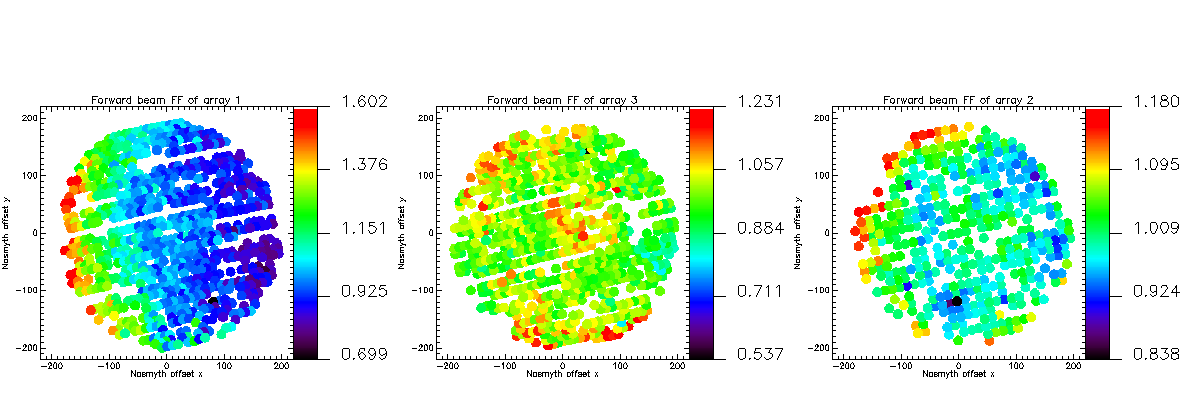
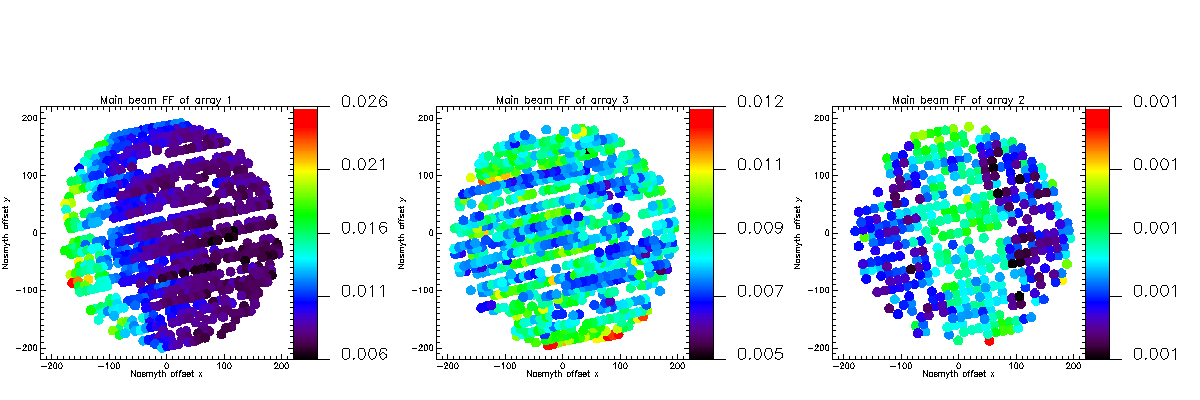
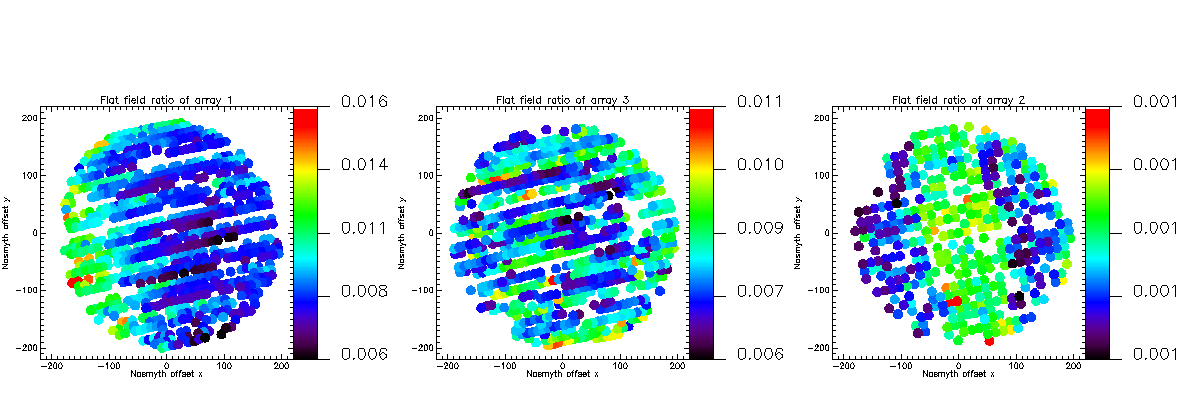
January 11, (Wednesday)
We have added the security gauge before the oil trap in the primary pump. It is called P7, to be compared to P3 (after the oil trap). All the securities are now based on P7 instead of P3.
We have connected the ventilator of the HP400 turbo pump directly to the HP400 power supply (in the cryostat electronics armoire in the cabin), so they switch on and off together.
We have connected the orange vacuum pump in the spiral room (the pump we had used after the failure) to the automation of the GHS. So now this pump can be controlled remotely.
Fixed problems with the config of the automate.
We have cleaned the cabin, the NIKA2 space.
We have replaced (see ELOG) two boards in racks 1 and 2 (IP 152 and IP 162 respectively). We have identified a strange behaviour of rack 3 (last board but also slot 4, again see ELOG).
Launched the cool-down in the afternoon. The still thermometer has the usual problems. Probably related to the MMR3.
January 10, (Tuesday)
Alain, Alessandro and Andrea arrived at the telescope.
We have opened/closed the cryostat. Nothing particularly wrong was evident. We have changed the lenses "front of array" on arrays 1 and 3. Checked that the filter in front of array 1 was in good shape. The polariser and the dichroic were flat. We have checked the height of the 50K mirrors block compared to the 300K window. The 50K was 5mm too high (means the tie-rods too tightened). Now they are both aligned (the tie-rods were adjusted to get the good hight). With the tie-rods completely loosened we are at say, 0mm. The tie-rods completely tightened we are at 8mm. In our case we have adjusted the tie-rods to be at 3mm compared to "tie-rods loosened".
We have added super-insulation when needed. Cryostat closed and start pumping at 19h.
Again (like last time) we had a leak in the last ORing of the nose. Seems to be related to the "bride" that is not exactly flat. We would need a bigger-diameter ORring. We will order it.
We go to bed at 24h with no leaks.
